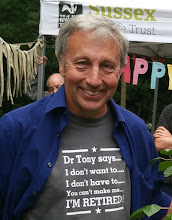I have had the chance to have a glance through the public consultation on “The future of the Public Forest Estate” since my last blog. We can now see some more details but concerns remain. I’ll just highlight one in this posting.
Woodlands have been classified in the consultation as large commercial, small commercial, multi-purpose and heritage. The first question here regards which wood is classified into which category as this will make quite a difference to the outcome.
The proposal seems to be to transfer the freehold of heritage woods on to a charity or community group without charge. This could include woods like St Leonards Forest, near Crawley. This might be a reasonable idea but there are questions. How about long-term funding? It costs money to look after woods so any community group will wish to ensure that funds are available, long-term, to enable such management. At present Forestry Commission grants could be sourced to achieve this. However, as an intention seems to be to save money one has to question whether government will continue these grants long into the future now that there will be far more people applying for them. This will be quite an expensive part of the proposal. FC already manages these sites very efficiently, probably at a lower cost than would be the case if charities did it with the aid of grants. More community and charity owned woods with local people more involved in their care – this could be a good thing. Maybe this is the only part of the proposal that is at all innovative and worthy of further consideration. But it will cost money.
More serious, however, are some of the other woods. We in the Wildlife Trusts may still consider some commercial and multi-purpose woods as very important ecologically, and could be made more so with sensitive management.
This might include sites like Friston Forest
http://www.sussexwt.org.uk/conservation/living_landscapes/page00008.htm
near Eastbourne
and Tilgate Forest
http://www.sussexwt.org.uk/community/page00001.htm
near Crawley
where the Sussex Wildlife Trust is already active.
Government seems to have the intention of offering these to charities first, but we’d have to buy at “open market values” (i.e. a lot of money). There is an ethical question here for charities. Should we be giving money to government in order to purchase public woods in order to keep them as public woods? Indeed I wonder whether the Charity Commission would consider that a good use of charitable funds. Assuming we did purchase any then once again these would have to be managed utilising FC management grants. Even considering the income government could get by selling to charities (or selling long leases to commercial companies) it is unlikely that government would make much (if any) money from the process.
The “background” section in the consultation makes interesting reading. It reads as a list of major achievements delivered by the FC. I agree with this (and much more could be said). FC is an efficient and effective body delivering much public benefit. So I am still left with the question “why?”
Subscribe to:
Post Comments (Atom)

No comments:
Post a Comment